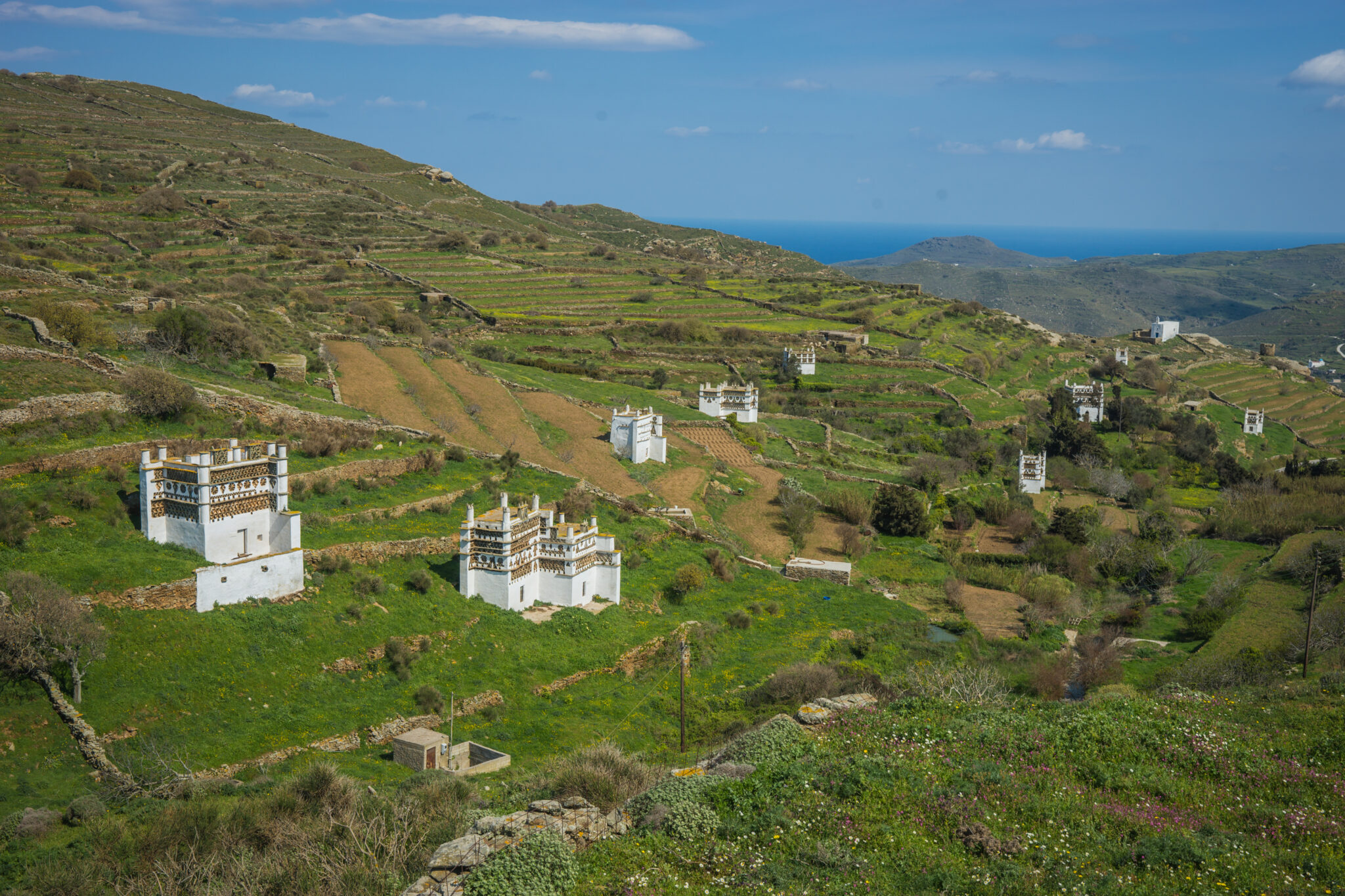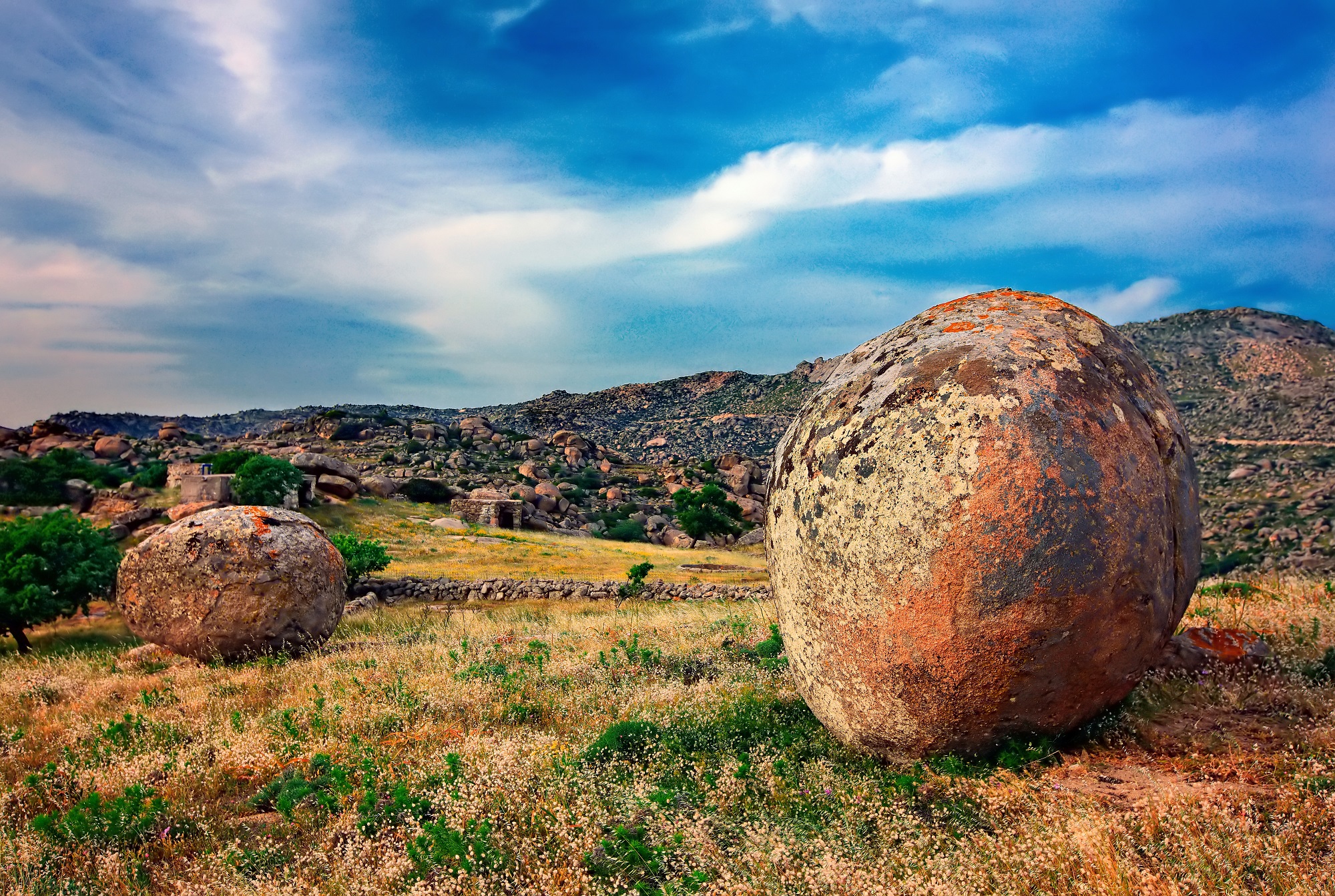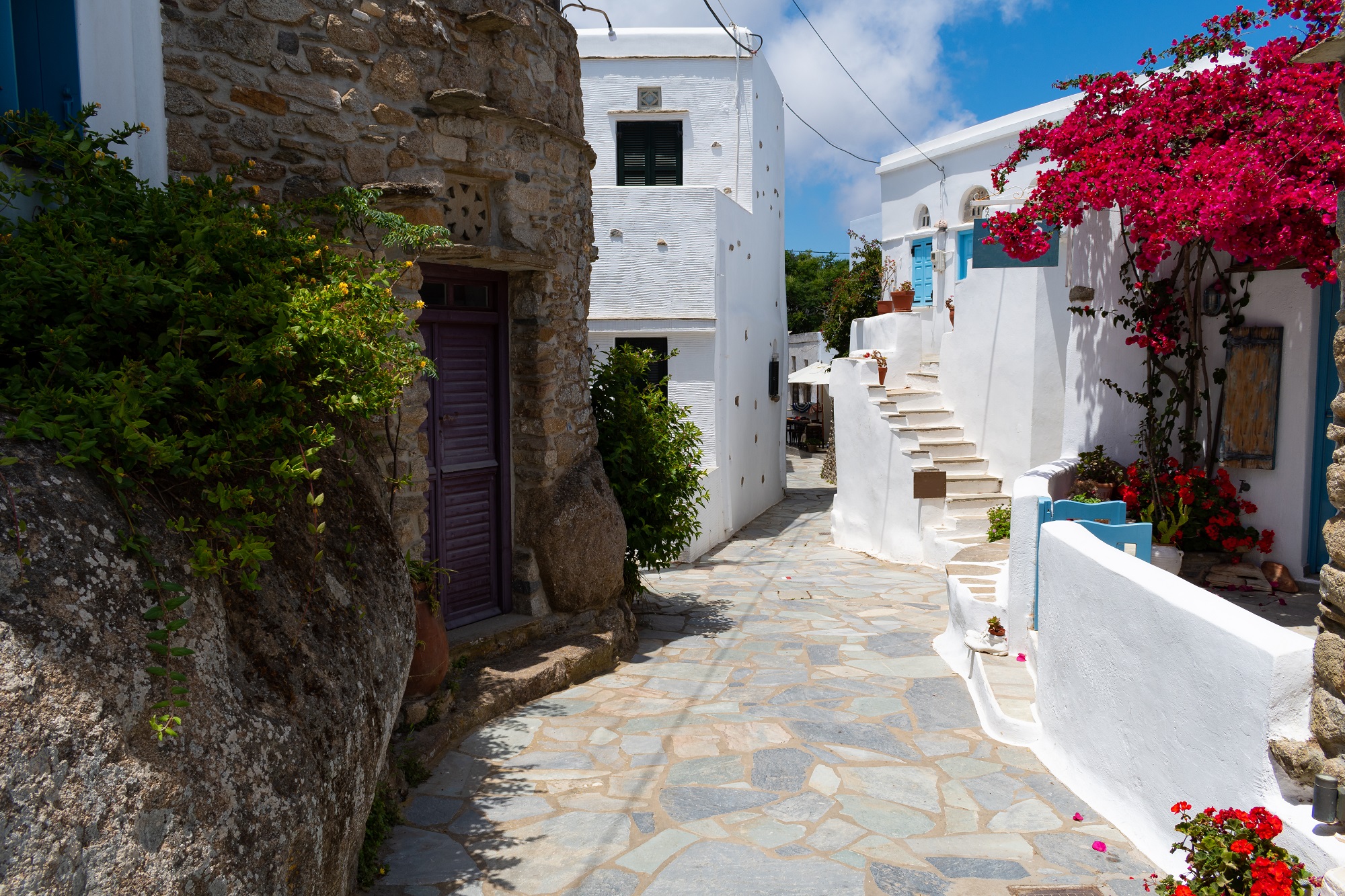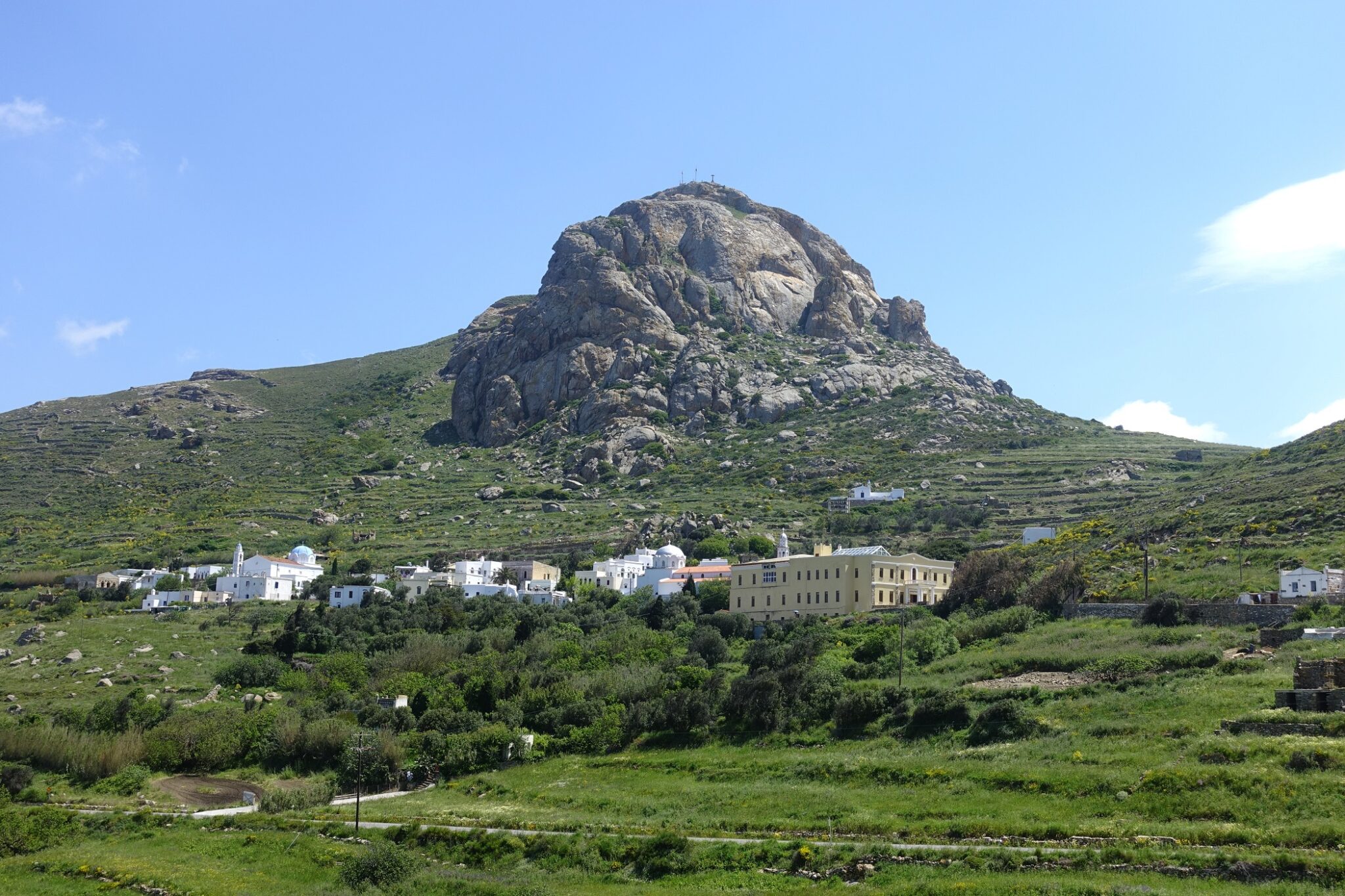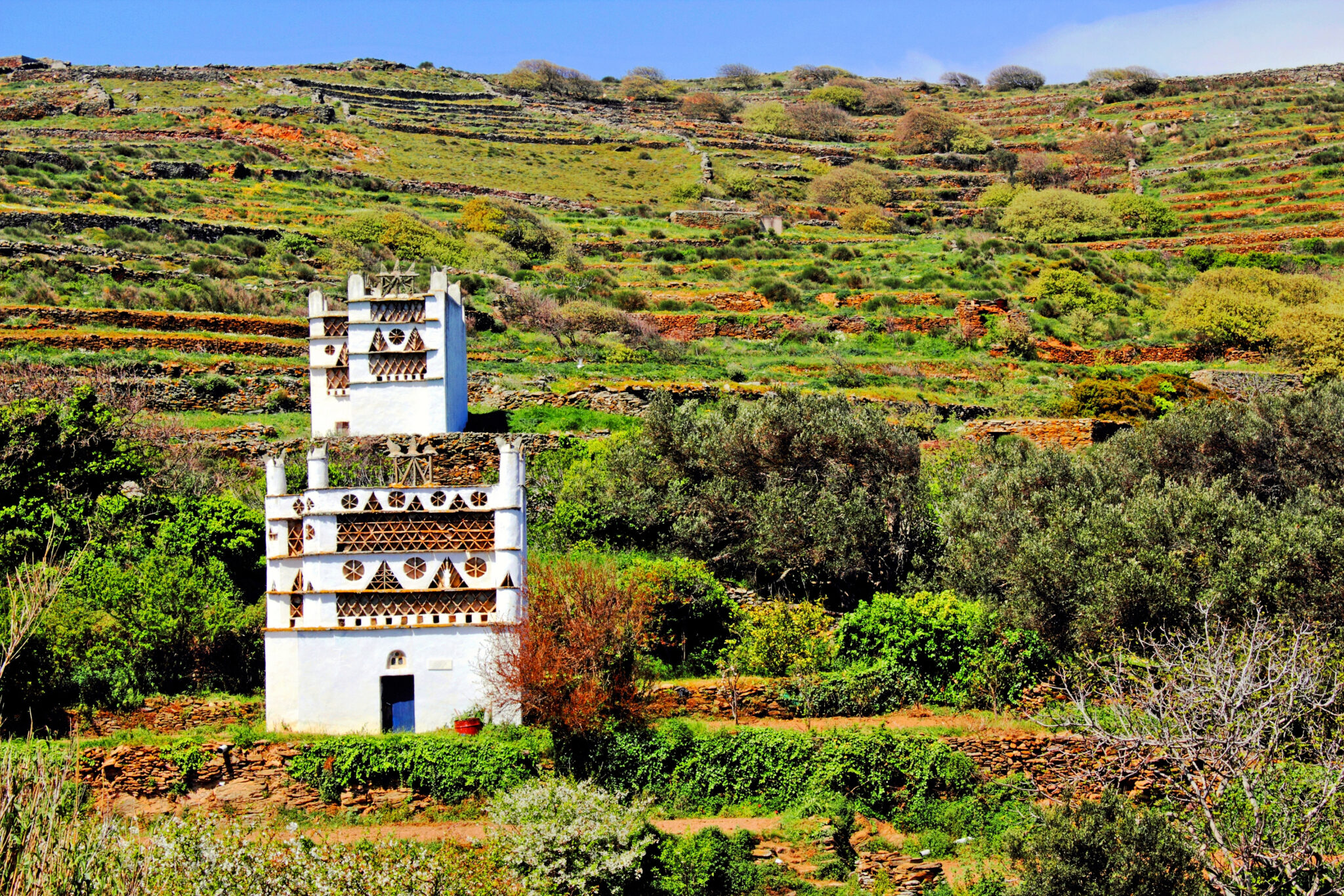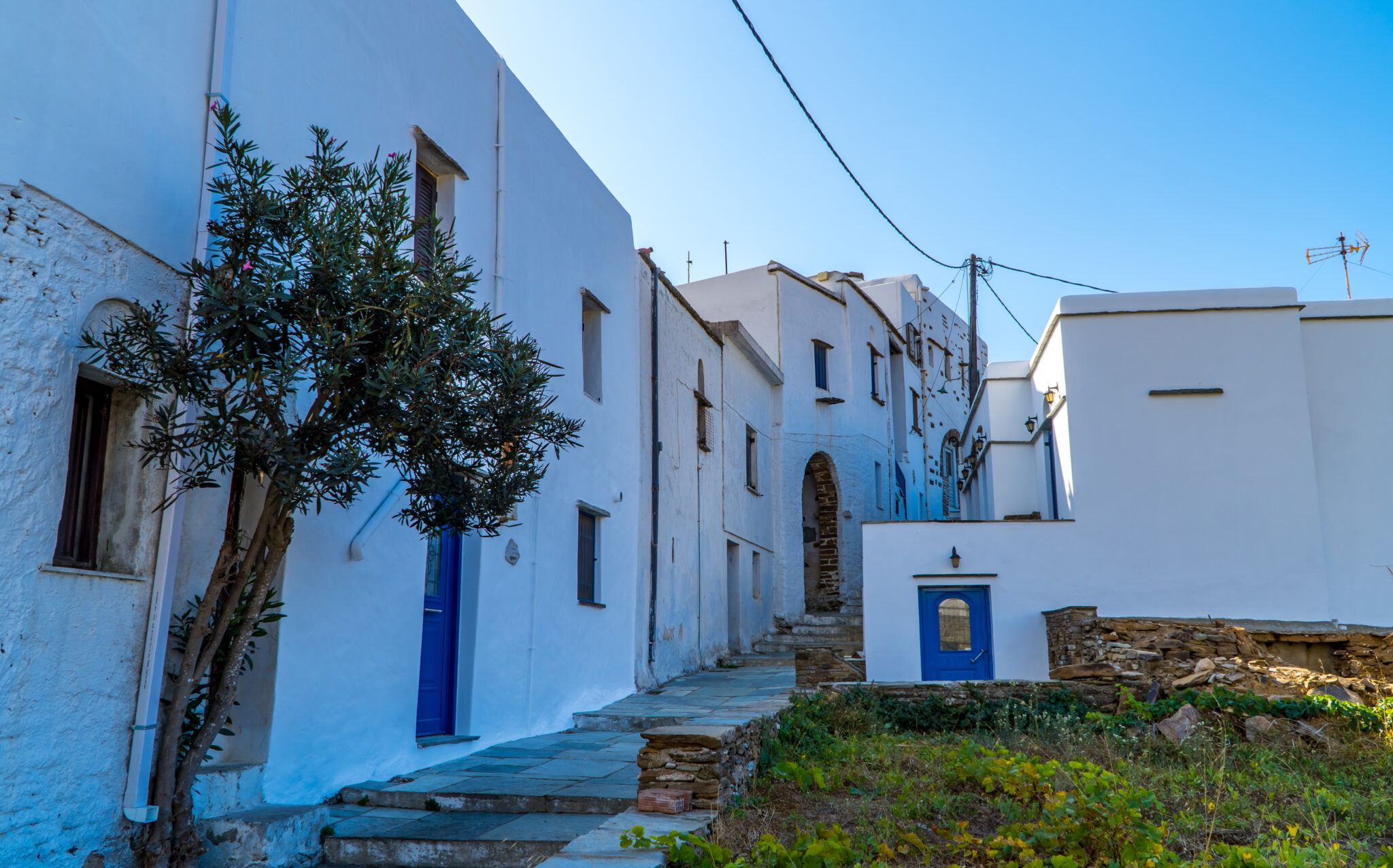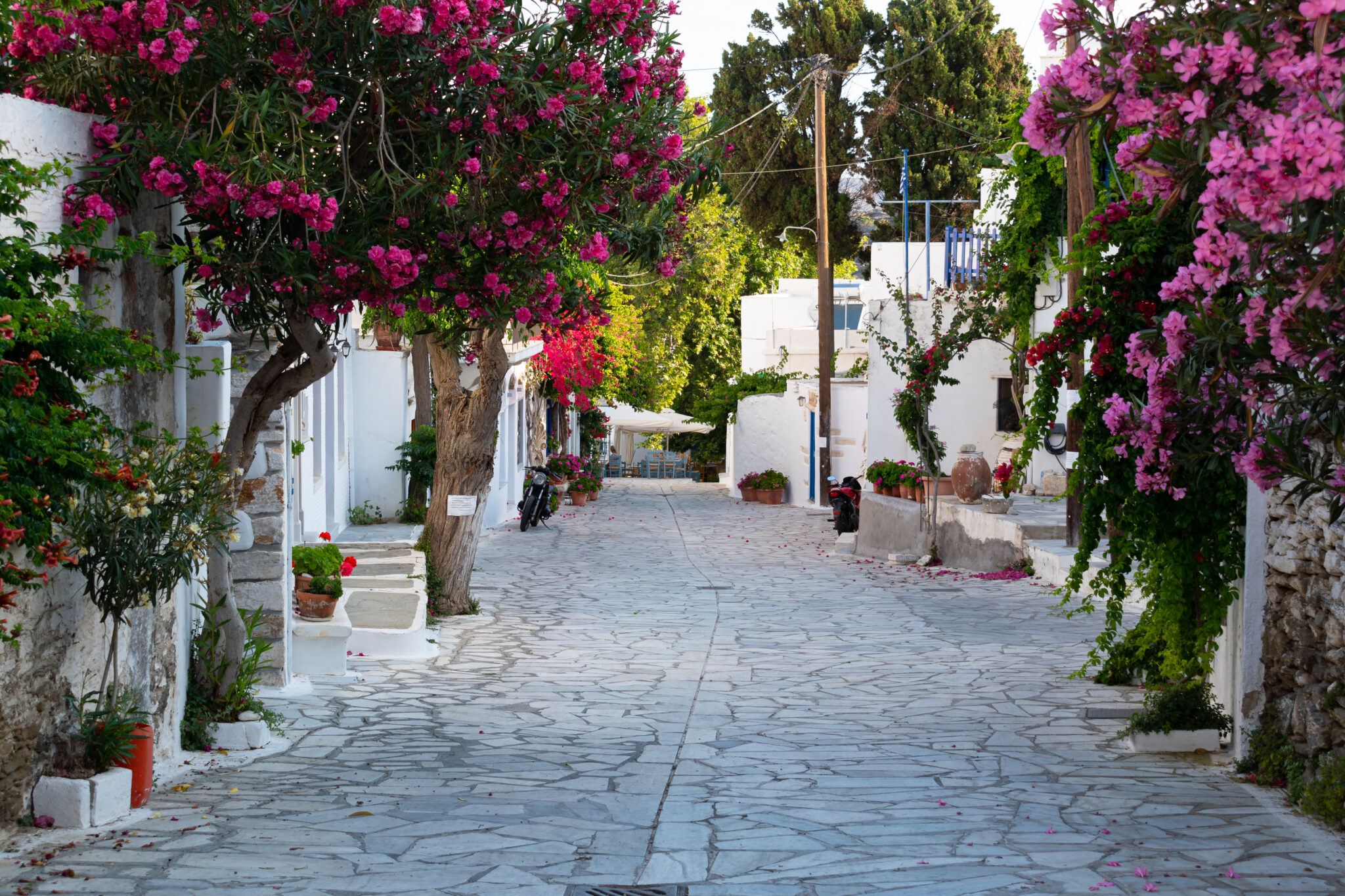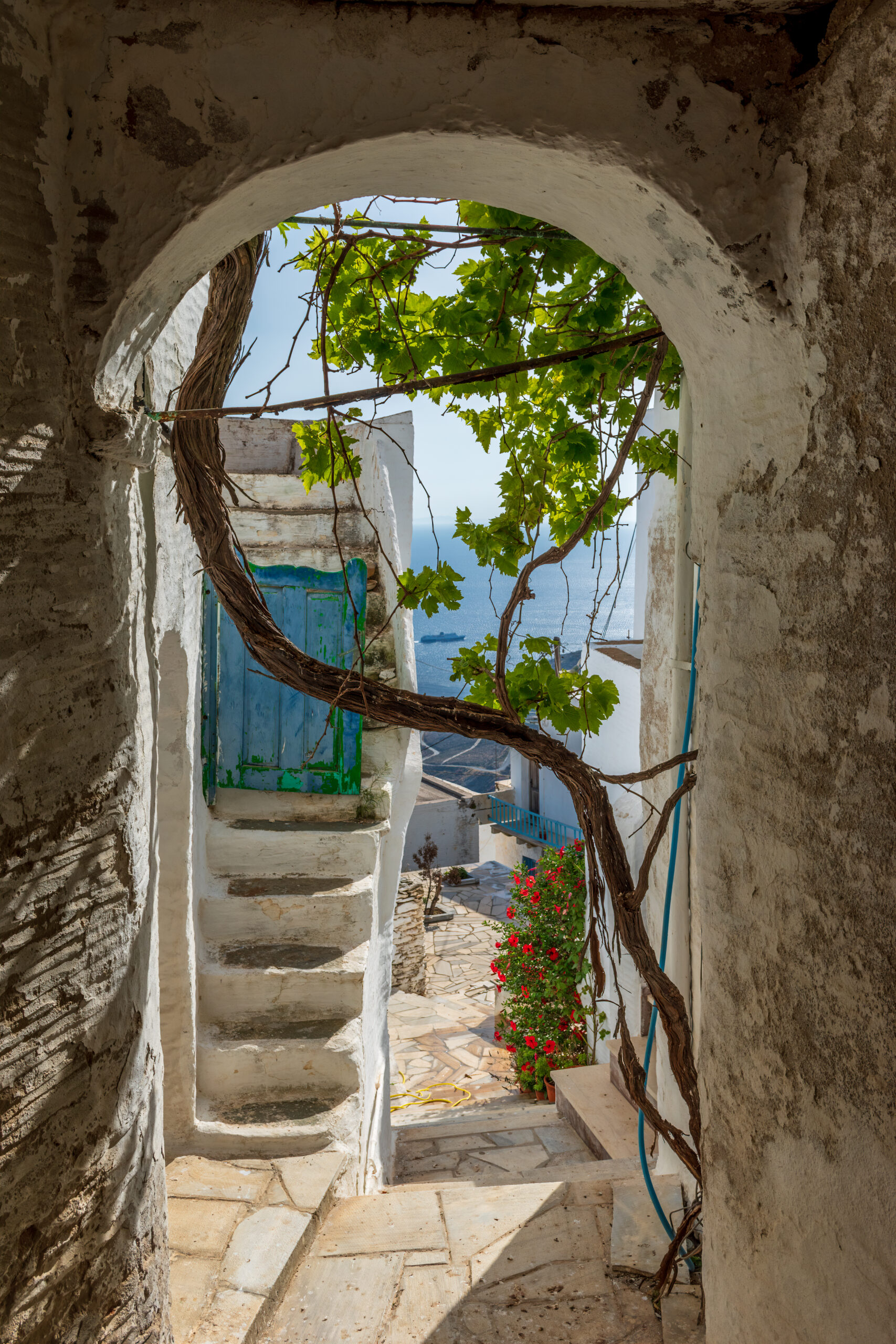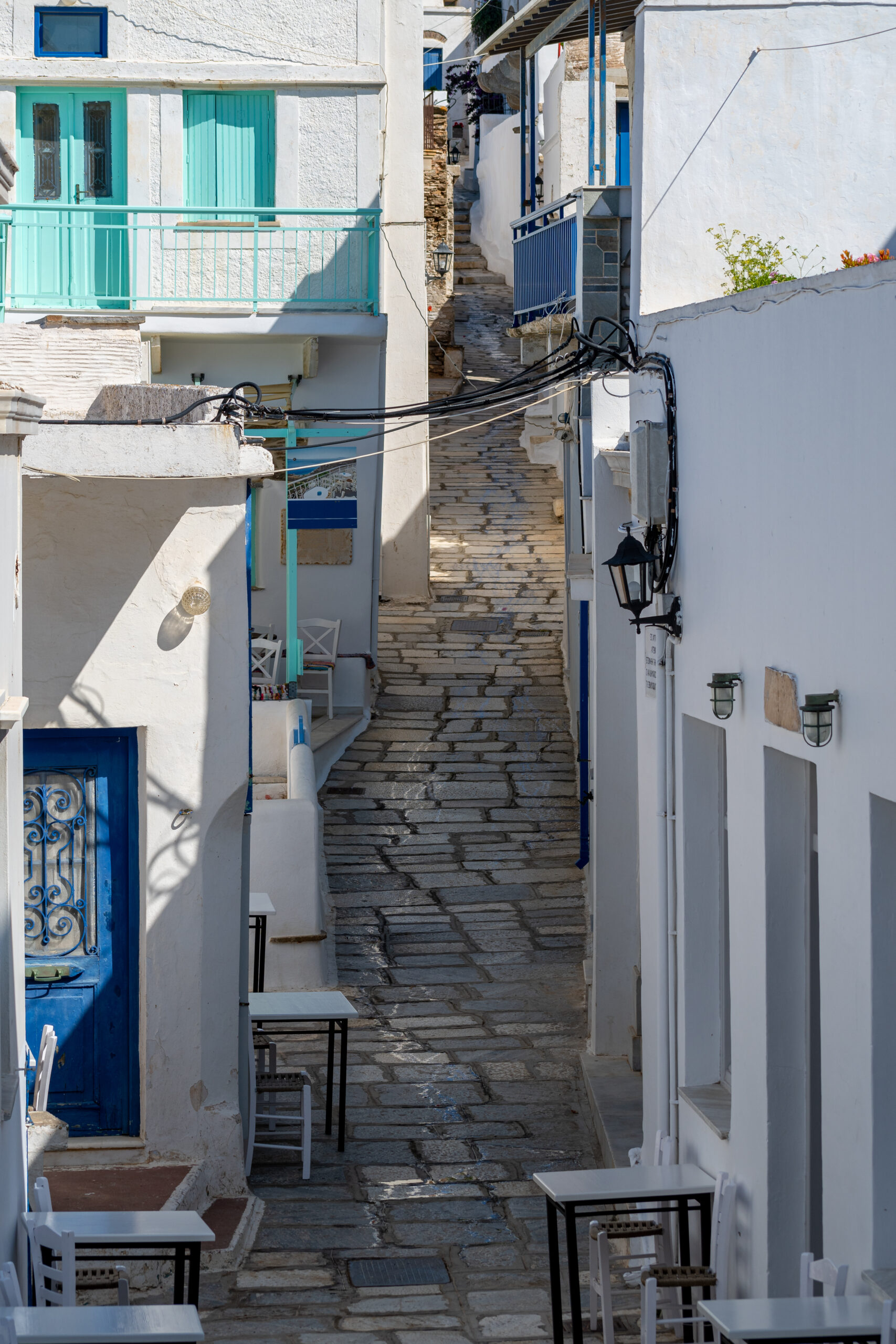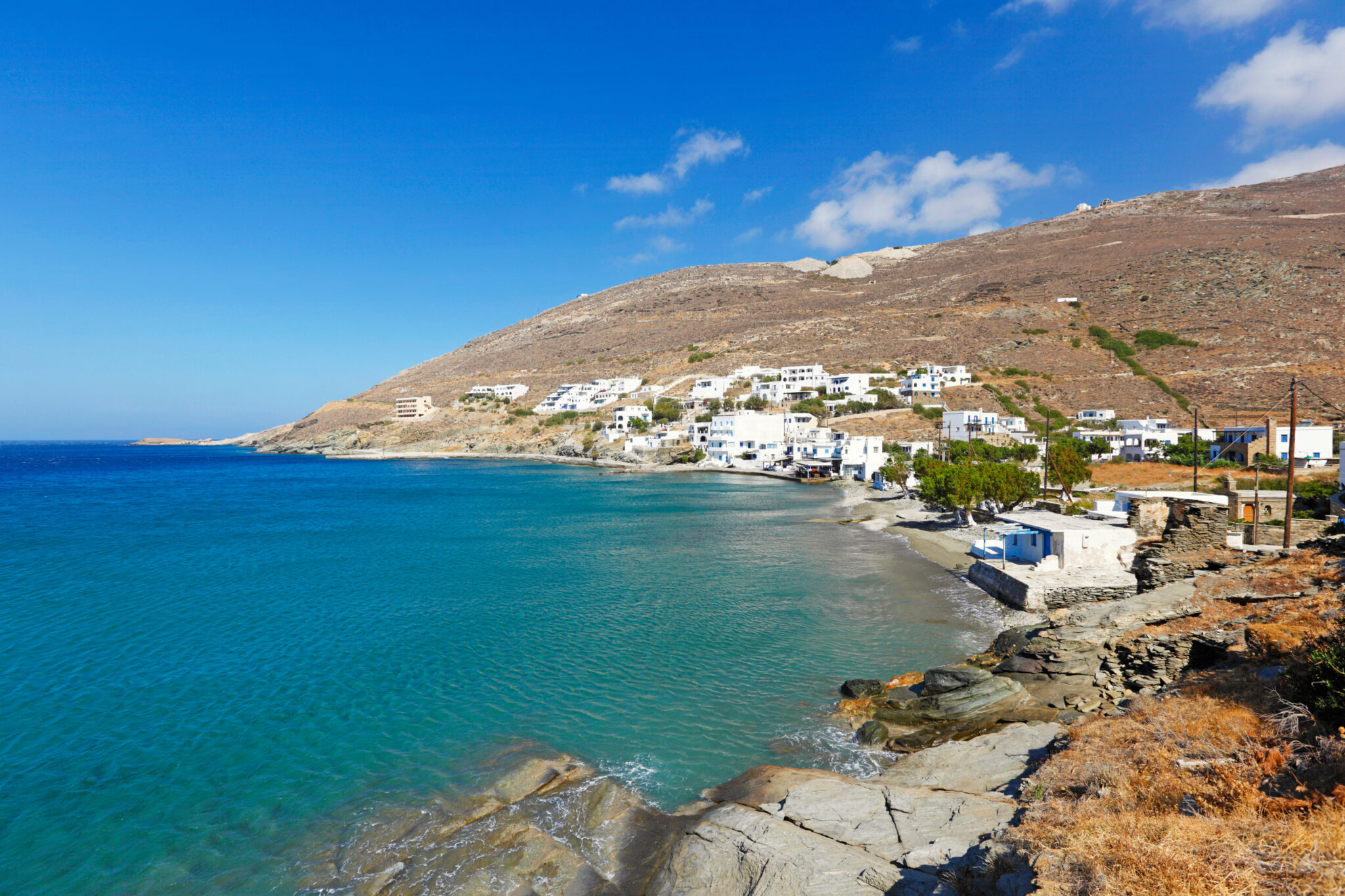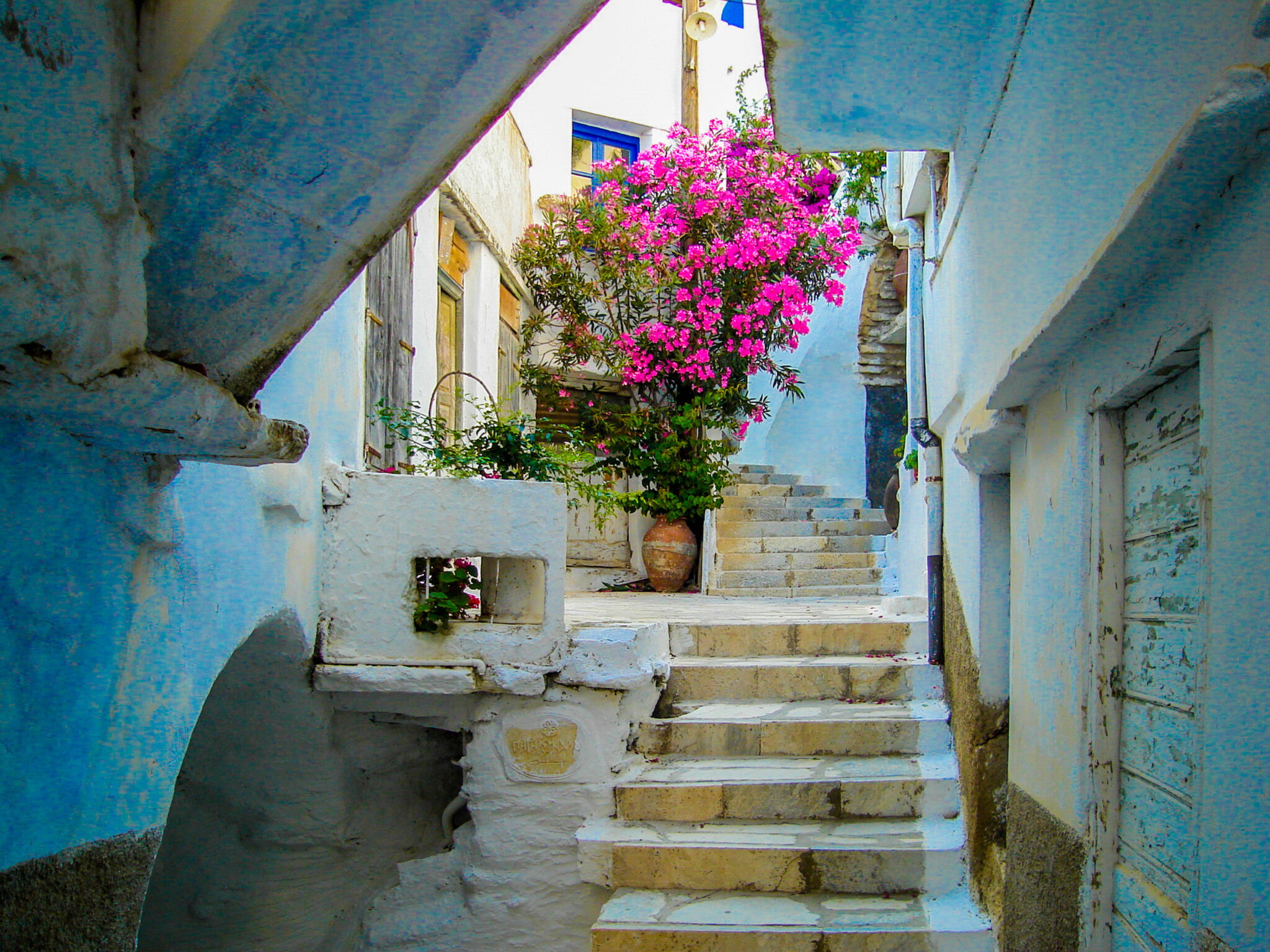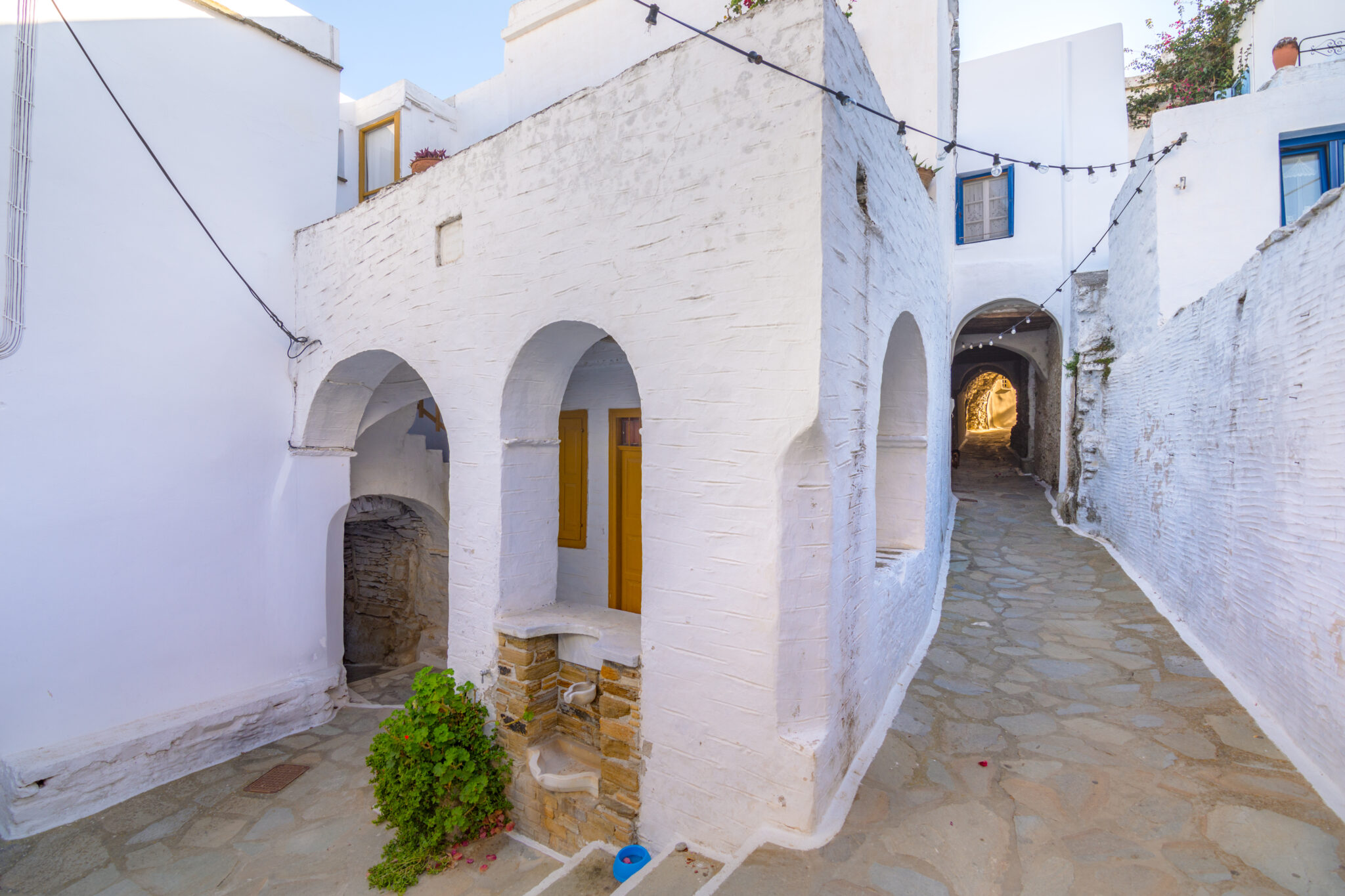We set off on an exploratory adventure of the increasingly popular Cycladic island, where the sea winds toss their salt on giant granite boulders and scenic villages that have stood still in time.
Over the last few decades, Tinos has been attracting hikers, windsurfers and foodies, who come to traipse through its rugged Cycladic landscapes and beautiful traditional villages, relax at its varied beaches and blend into the communities hosting everything from traditional festivals to art installations and theatrical productions. Here, we present the most fascinating places, landmarks and sights to visit.
Volax and Kakovolo
It’s impossible to remain unmoved when faced with the alien landscape of Volax: thousands of small and large granite boulders, like boules tossed there by a giant hand, fill a triangular plateau of 23 kilometers squared. Many like to believe that this is the seabed of an ancient sea that surfaced thousands of years ago or remnants of meteorites. Choosing a more scientific view, Geologists explain that it is “granite with spherical weathering and granitic landforms of tafoni and alveoles”. Among the boulders, the small village of Volax stands out in white.
The route through Kakovolo, as the locals call it, starts from the neighbouring village of Falatados. Orbicular granites of all sizes create one of the most impressive landscapes in the Cyclades, an awe-inspiring outdoor geological museum. Among them are dovecotes, small churches, “stalls” for animal protection, and vineyards.
Kechrovouni Monastery
The ancient monastery of Our Lady of the Angels, with its remarkable architecture, stands as a significant place of worship on the island. Written information about the Kechrovouni Monastery is scarce, but it has certainly existed since the Venetian period. Its main church was renovated in 1774. By following the signs, you’ll find the humble cell of the nun Saint Pelagia who, according to tradition, dreamt of the location of the icon of the Virgin Mary on the 23rd of July 1822.
Exobourgo
This rocky hill, with its peculiar shape, stands out from many points on the island. Perched at 640 meters above sea level, on these precipitous and naturally fortified rocks, once stood the highest castle of the Aegean. During various historical periods, the area served as the island’s capital. The climb up to the rock, with the castle’s ruins and the crows flying around, is an unforgettable experience. The view from there, stretching to the neighboring islands, is simply unique.
During Byzantine times, Exobourgo was inhabited when the locals left the coast due to piracy. In 1207, when the Ghisi brothers seized Tinos, they built the Castle of Saint Helen there. In 1715, the Turks took over the castle through treachery and demolished it. Until the early 20th century, the area was abandoned, and the capital was relocated to the city of Tinos. At the base of the rock remain the Orthodox chapels of Saint Minas and Eleousa, as well as the significant Catholic pilgrimage site of the Sacred Heart of Jesus. Founded by Jesuit monks, it was renovated in 1893. In recent years, Exobourgo has been a leading destination on Tinos for rock climbing, with 90 different difficulty-level routes.
The Dovecotes of Tinos
Evidence of Tinos’s dovecotes dates back to 1726, and today, in varying states of repair, as many as 600 are preserved. They are intricate and distinct from each other, made from slate, stone, and lime.
Characterised by their renowned “stone lacework” that forms triangles, diamonds, and suns, it’s believed that they were brought to the island by the Venetians. The Tinian people continued to raise pigeons because they used their droppings as fertiliser and ate the squabs. Individual dovecotes are continually visible throughout the island’s routes, and a complex of dovecotes exists in Tarabados, a small village built in the 17th century. Dovecotes can also be seen in the areas of Potamia, Steni, Falatados, and the valley of Tripotamos.
The Churches
The Orthodox and Catholic churches of Tinos are numerous, and their intricate, elegant bell towers made of marble stand out within the settlements. On every route, the barren Cycladic landscape is illuminated by small and large chapels, many of which are private, which number up to 600 across the island. Their austere lines and white colours stand out among the dry-stone walls, slopes, plains and ridgelines, or next to the sea. Almost all of them celebrate with small or large festivals. Every visitor and passer-by is invited to eat, drink and dance.
Vrekastro
On the eastern edge of the bustling beach of Agios Fokas, a rocky hill penetrates the sea. This is Vrekastro (or Vryokastro), at the top of which were found ruins of a Neolithic fortress and a settlement dating back to the 16th century BC.
The Sanctuary of Poseidon and Amphitrite at Kionia
Tinos has been a place of pilgrimage since ancient times, as evidenced by the temple of Poseidon and Amphitrite at Kionia. Initially, it was a small shrine facing the sandy beach. Over time, it gained fame, and in the centre of the sacred grove, a healing and purifying sanctuary was created. Here, Poseidon was worshipped as a healer from the 7th century BC until the 4th century AD. In the 3rd century BC, the sanctuary was upgraded, gaining even greater glory, while the worship of Amphitrite was enhanced. The ancient temple was destroyed by Christians at the beginning of the 4th century. The archaeological site is open to visitors.
Pyrgos and Panormos
And who, among Tinos’ visitors, has not ventured to Pyrgos to sit in its well-known square with its marble fountain, cafes and restaurants in the shade of the giant plane tree? Pyrgos is the largest settlement on Tinos, after the main town, and pilgrims come here in droves by bus. However, if you manage to catch it without the crowds, you’ll get to appreciate its beauty in its entirety, as a model village of Cycladic architecture and an open-air museum of folk art. It’s worth wandering through its alleys and seeing Ag. Nicholas and Ag. Demetrios, and exploring its neighborhoods, each with houses that have pretty, flower-filled courtyards full of a plethora of interesting architectural elements – such as lintels, window frames, and embossed decorations.
All are crafted in marble, as are their artistically rendered fountains. Talking of marble, be sure to visit the excellent Pyrgos Marble Art Museum, the Tinos Artists Museum and next to it, the home of Yannoulis Halepas which is a Historic Preservable Monument. Around 3.5 kilometres away from Pyrgos is Panormos, a small harbour with fishing boats, many rentals and small hotels, seaside taverns, cafes, and restaurants. Across the way is the islet of Planitis and its lighthouse. It was first lit in 1886 and marks the unique northern harbour of Tinos.
Kardiani and Ysternia
Perched amphitheatrically on the slopes of Mount Pateles and immersed in lush vegetation, Kardiani offers a remarkable view of the sea. As you stroll, you will be captivated by the stunning houses, marble fountains, vaulted arcades, and the Catholic and Orthodox churches – including the renowned Panagia Kioura, the Dormition of the Virgin Mary, and the Holy Trinity. If you linger until late in Kardiani, you’ll relish one of the most glorious sunsets of your life, seated with the locals in the central square, where the distinctive fountain adorned with sculpted frogs resides. In Kardiani, there are luxury villas available for rent, featuring pools and a sweeping view of the sea.
Ysternia, the famous and striking village of the marble carvers, seems almost untouched by time. It too is built in an amphitheatrical style, boasting homes of masterful architecture in which marble reigns supreme. The grand church of Agia Paraskevi, built in Byzantine times, is truly a marvel. Its marble courtyard offers a spectacular view of the sea and the bay of Ysternia, which is a destination in itself – especially for food lovers, as it is home to the renowned Thalassaki fish restaurant. South of the tavernas, you’ll find a small sandy beach for swimming, protected from the northern winds.
Triantaros and Berdemiaros
Built high up, yet invisible from the sea so that they could be protected from the view of pirates, the two adjacent settlements were likely built in the 13th-14th century. The clusters of houses in Berdemiaros appear like something from vintage postcards, as they have been almost completely restored to their original glory. Triantaros was known for its skilled stonemasons, and in recent years has become even more renowned for almost equally adept contractors who have created yet another ‘settlement’ of Cycladic-style homes for sale, along with luxurious hotels boasting suites and pools.
This large and lively village boasts spanning vistas, charming tavernas, and the very popular Cycladic alley known as Triantaraki. Wander along it to see the tastefully curated shops and relax in its familial cafes and restaurants. Also in Triantaros, try to visit the 1905 fountain, the Church of the Holy Apostles from 1887, and the old olive press.
Loutra
This place took its name from ancient baths that operated on the outskirts of the village. Among the Cycladic dwellings is the complex of the Ursuline Monastery which later became a school, established in 1862, and by the early 20th century, and home to 300-350 boarders, dominates. Also noteworthy is the magnificent Church of Ag. Iosif from 1860, which is part of the Jesuit Catholic Monastery where monks were transferred from the older one founded in 1670 in Mt. Xombourgo. The monastery houses a library with thousands of titles and a small folk museum.
Tripotamos and Ktikados
Tripotamos is situated between three rivers/gorges, and its houses stand out amidst the greenery. It is considered a medieval, possibly Byzantine settlement, where you should visit the Church of the Dormition of the Virgin Mary (1853) and see the icon of the Nativity of Christ. Ktikados (or Ktikado) is one of Tinos’ most beautiful villages, with stunning architecture and panoramic views of the sea and Kionia. You will admire the paved streets with arches, houses with marble window frames, fountains with washing basins – where locals still scrub clean their carpets and blankets – the Catholic Church of the Holy Cross, and the Orthodox Church of the Presentation of the Virgin Mary, or Megalomata. A well-maintained cobbled path starts from Ktikados towards Chora.
Xinara and Falatados
Built at the foot of Mt. Xombourgo in the 19th century, Xinara is the seat of the Catholic Archbishopric, which also houses a museum of ecclesiastical relics. Among the beautiful Cycladic houses, two significant Catholic churches rise: the Church of the Virgin of Rodario (1860-1870) and the Church of Apostles Peter and Paul (1836). To really get to know Falatados, the second-largest village on Tinos after Pyrgos, you need to walk through it. From the cobbled path, you’ll find yourself in the square of Panagia Megalochari and the church of Saint John-Holy Trinity, in a basilica rhythm, built at the end of the 19th century with an 18-meter dome. In the village, there are two other old churches: Agia Paraskevi and the Dormition of the Virgin Mary. In the village, you’ll find charming ouzeries and coffee shops, tavernas, and the popular Suntan cocktail bar.
Lesser-known villages
It’s challenging to include all the settlements of Tinos in a small travel guide; there are many more large and small villages to discover, such as Dyo Choria with its shady square where it’s worth going for breakfast, Arnados, Agapi, Komi, Potamia, Myrsini, Steni, Campos, Karya, Mountados, and many more. Each one has its sights and surprises. In recent years, even the smallest villages have opened cafes and small taverns to accommodate rambling tourists. For those in the know, walking in the Koris Pyrgos area, in Polemou Campos, and the demolished Monasteries is a unique experience. It’s also worth visiting the coastal settlements of Marlas and Mamados, near Pyrgos.
Read also:
Best Gastronomic Experiences on the Island of Tinos
Volax: Spring escape in the mountainous village with the lunar landscape, on Tinos, in the Aegean
Tinos, Home to the Cyclades’ best Villages, is Ideal for Exploration beyond Summer



